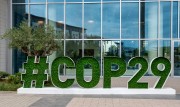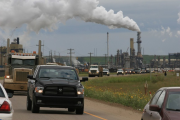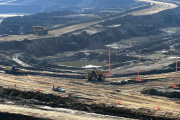Desperate times may call for desperate measures, but the Government of Alberta’s approach to environmental reclamation is not fit for purpose. The proposed new program would give oil companies $100 million in royalty credits if they agree to clean up their old oil wells — ones they’re legally responsible for anyways.
Make no mistake: Alberta’s problem when it comes to inactive wells is desperate. Estimates vary, but a 2021 report from the Alberta Liabilities Disclosure Project pegged the average cost (using the Alberta Energy Regulator’s own methodology) of cleaning up the more than 300,000 unreclaimed wells at $55 billion. This is not seen in other energy-producing jurisdictions like British Columbia or North Dakota.
The good news is that we don’t need to find innovative approaches to get oil and gas companies to fulfill their responsibilities to the public. Instead, we can rely on a more familiar one: actually enforcing the rules. For decades, there has been a lack of political will to do this — but Alberta should set firm timelines for cleaning up old wells, and require companies to spend more money on reducing their inventories of them.
It should also increase the fees paid by companies to the Orphan Well Association, which handles the wells that have no owner because of bankruptcy or other financial conditions. Given the record cash flows that Alberta’s oil and gas companies just reported in 2022, this shouldn’t be a problem.
 And, perhaps even more importantly, given the future outlook for oil demand (set to enter long-term decline this decade, according to the oil industry’s own projections), if we don’t ask companies to spend money on this now, Albertans may have no choice but to foot the entire bill later, when the industry has run out of cash.
And, perhaps even more importantly, given the future outlook for oil demand (set to enter long-term decline this decade, according to the oil industry’s own projections), if we don’t ask companies to spend money on this now, Albertans may have no choice but to foot the entire bill later, when the industry has run out of cash.
Creating strong regulations, and then actually enforcing them, is something that would also help the industry tackle its biggest problem of all: reducing greenhouse gas emissions. More stringent methane regulations and an Alberta government cap on oil and gas emissions — one that declined over time — are both things the province could implement to ensure the industry lives up to its own net-zero promises.
And as we’ve seen with Alberta’s successful coal phaseout, good regulations can spur industry to achieve things it may not have thought was possible. Despite some initial consternation about the 2030 deadline being wildly ambitious, the last coal-fired plant in Alberta is expected to go offline this year, way ahead of schedule.
We need a similar success story for oil and gas emissions, not just because this is crucial to Canada’s climate targets (oil and gas emissions continue to grow while they are falling across other industrial sectors), but because making our oil production less emissions-intensive will keep our industry competitive, and protect oil and gas jobs.
The industry already has more than enough government help when it comes to things like carbon capture and storage. The upcoming federal budget is expected to include a generous tax credit, while the provincial carbon price — one that was recently updated for large industrial emitters — gives oil and gas companies even more reason to reduce their emissions.
What’s needed now is a regulatory environment where the rules are clear, the targets are well-defined, and penalties for failing to meet them are enforced. That has to start with the province’s inventory of inactive wells, and it has to start now. Without a clear signal that there’s a cost for not meeting their existing cleanup obligations, companies continue to get the message they can postpone — or even default on — future ones. If that happens, the problem will only get worse.
As for the $100 million that’s being proposed, it could go a long way towards supporting investments in job-creating renewable energy and low-carbon technologies. As a province, and as a country, we’ve spent lots of money helping grow our oil and gas sector, and that’s paid off in both jobs and tax revenue.
Now it’s time to apply that strategy to our next growth industry, one that will help us reduce our emissions and increase our share of the trillion-dollar clean energy market.






